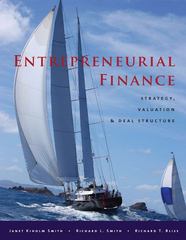

The news-magazine The Economist regularly publishes data on the so called Big Mac index and exchange rates between countries. The data for 30 countries from the April 29, 2000 issue is listed below: Country Price of Actual Exchange Rate Currency Big Mac per U.S. dollar Indonesia Rupiah 14,500 Italy Lira 4,500 South Korea Won 3,000 Chile Peso 1,260 Spain Peseta 375 Hungary Forint 339 Japan Yen 294 Taiwan Dollar 70 Thailand Baht 55 Czech Rep. Crown 54.37 Russia Ruble 39.50 Denmark Crown 24.75 Sweden Crown 24.0 Mexico Peso 20.9 France Franc 18.5 Israel Shekel 14.5 China Yuan 9.90 South Africa Rand 9.0 Switzerland Franc 5.90 Poland Zloty 5.50 Germany Mark 4.99 Malaysia Dollar 4.52 New Zealand Dollar 3.40 Singapore Dollar 3.20 Brazil Real 2.95 Canada Dollar 2.85 Australia Dollar 2.59 Argentina Peso 2.50 Britain Pound 1.90 United States Dollar 2.51 7,945 2,088 1.108 514 179 279 106 30.6 38.0 39.1 28.5 8.04 8.84 9.41 7.07 4.05 8.28 6.72 1.70 4.30 2.11 3.80 2.01 1.70 1.79 1.47 1.68 1.00 0.63 The concept of purchasing power parity or PPP ("the idea that similar foreign and domestic goods ... should have the same price in terms of the same currency," Abel, A. and B. Bernanke, Macroeconomics, 4th edition, Boston: Addison Wesley, 476) suggests that the ratio of the Big Mac priced in the local currency to the U.S. dollar price should equal the exchange rate between the two countries. After entering the data into your spreadsheet program, you calculate the predicted exchange rate per U.S. dollar by dividing the price of a Big Mac in local currency by the U.S. price of a Big Mac ($2.51). To test for PPP, you regress the actual exchange rate on the predicted exchange rate. The estimated regression is as follows: Actual Ex Rate = -27.05 + 1.35 * PredExRate R2 = 0.994, n = 29, SER = 122.15 (23.74) (0.02) (a) Your spreadsheet program does not allow you to calculate heteroskedasticity robust standard errors. Instead, the numbers in parenthesis are homoskedasticity only standard errors. State the two null hypothesis under which PPP holds. Should you use a one-tailed or two-tailed alternative hypothesis? (b) Calculate the two t-statistics. (c) Using a 5% significance level, what is your decision regarding the null hypothesis given the two t-statistics? PLEASE NOTE THAT THE SAMPLE SIZE IN THIS CASE IS LESS THAN 30. Are you concerned with the fact that you are testing the two hypothesis sequentially when they are supposed to hold simultaneously? (d) What additional assumptions did you need to make for being able to use Student's t- distribution? The news-magazine The Economist regularly publishes data on the so called Big Mac index and exchange rates between countries. The data for 30 countries from the April 29, 2000 issue is listed below: Country Price of Actual Exchange Rate Currency Big Mac per U.S. dollar Indonesia Rupiah 14,500 Italy Lira 4,500 South Korea Won 3,000 Chile Peso 1,260 Spain Peseta 375 Hungary Forint 339 Japan Yen 294 Taiwan Dollar 70 Thailand Baht 55 Czech Rep. Crown 54.37 Russia Ruble 39.50 Denmark Crown 24.75 Sweden Crown 24.0 Mexico Peso 20.9 France Franc 18.5 Israel Shekel 14.5 China Yuan 9.90 South Africa Rand 9.0 Switzerland Franc 5.90 Poland Zloty 5.50 Germany Mark 4.99 Malaysia Dollar 4.52 New Zealand Dollar 3.40 Singapore Dollar 3.20 Brazil Real 2.95 Canada Dollar 2.85 Australia Dollar 2.59 Argentina Peso 2.50 Britain Pound 1.90 United States Dollar 2.51 7,945 2,088 1.108 514 179 279 106 30.6 38.0 39.1 28.5 8.04 8.84 9.41 7.07 4.05 8.28 6.72 1.70 4.30 2.11 3.80 2.01 1.70 1.79 1.47 1.68 1.00 0.63 The concept of purchasing power parity or PPP ("the idea that similar foreign and domestic goods ... should have the same price in terms of the same currency," Abel, A. and B. Bernanke, Macroeconomics, 4th edition, Boston: Addison Wesley, 476) suggests that the ratio of the Big Mac priced in the local currency to the U.S. dollar price should equal the exchange rate between the two countries. After entering the data into your spreadsheet program, you calculate the predicted exchange rate per U.S. dollar by dividing the price of a Big Mac in local currency by the U.S. price of a Big Mac ($2.51). To test for PPP, you regress the actual exchange rate on the predicted exchange rate. The estimated regression is as follows: Actual Ex Rate = -27.05 + 1.35 * PredExRate R2 = 0.994, n = 29, SER = 122.15 (23.74) (0.02) (a) Your spreadsheet program does not allow you to calculate heteroskedasticity robust standard errors. Instead, the numbers in parenthesis are homoskedasticity only standard errors. State the two null hypothesis under which PPP holds. Should you use a one-tailed or two-tailed alternative hypothesis? (b) Calculate the two t-statistics. (c) Using a 5% significance level, what is your decision regarding the null hypothesis given the two t-statistics? PLEASE NOTE THAT THE SAMPLE SIZE IN THIS CASE IS LESS THAN 30. Are you concerned with the fact that you are testing the two hypothesis sequentially when they are supposed to hold simultaneously? (d) What additional assumptions did you need to make for being able to use Student's t- distribution








